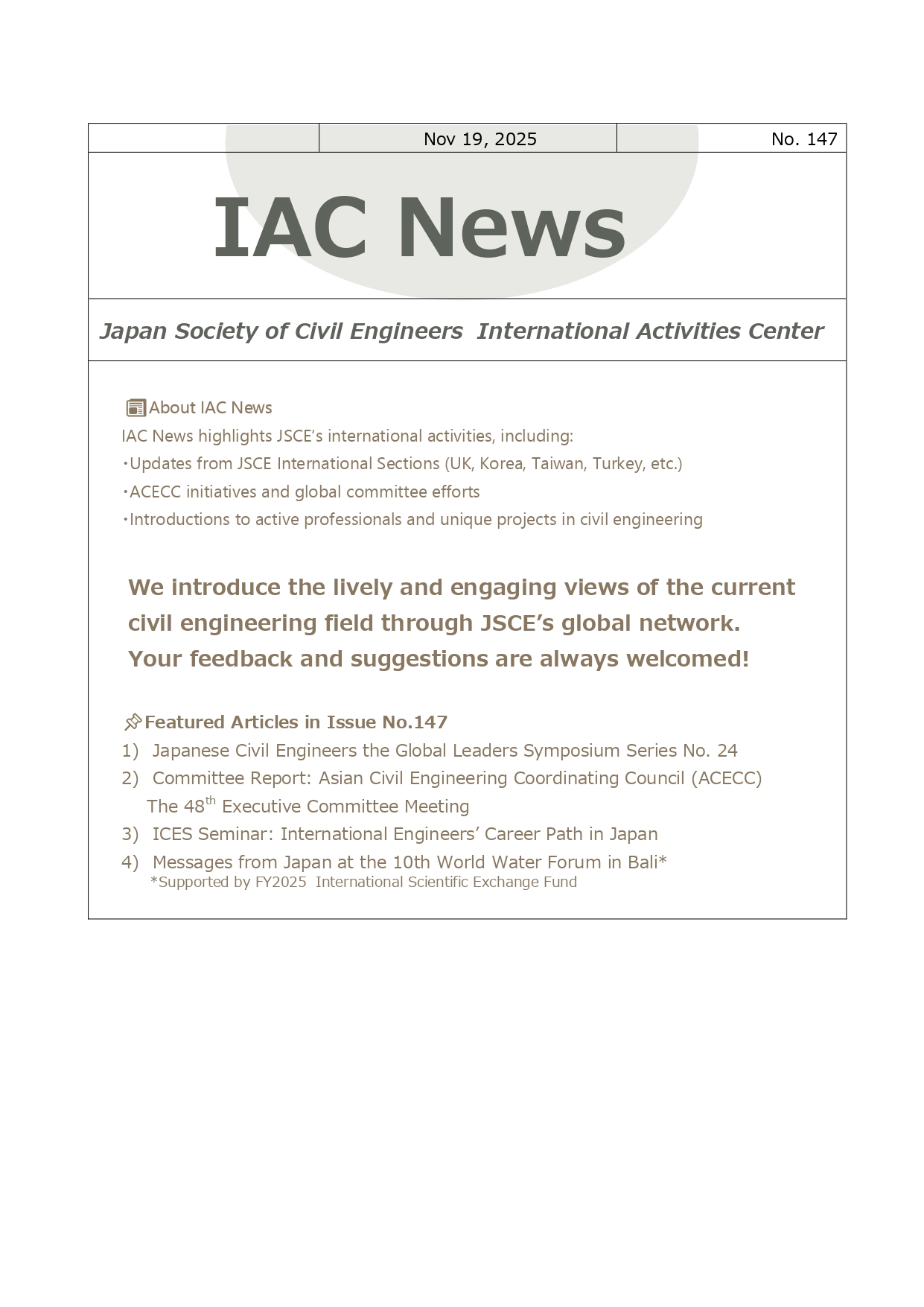2012 Outstanding Civil Engineering Achievement Award
[Group-1]
| 1. Improvement of underground railway terminal station under national highway in urban area accompanying removal of 10,000 tons of tunnel lining concrete around railway in operation (Compiled new station improvement technologies) |
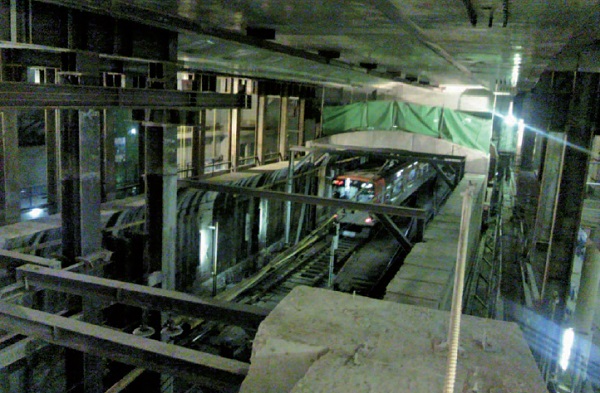 |
|
・Kobe Rapid Transit Railway Co.,Ltd |
|
Hanshin-Sannomiya Station is an underground terminal station located underneath the national highway route 2. The project aimed to improve accessibility and safety of the station opened in 1933 by expanding existing concourse and platform areas and building a new concourse using various advanced technologies. |
| 2. The Construction of the Immersed-Tube Tunnel “Wakato-tunnel”–The grand sum compiled technically in the history of Japanese submerged tunnels – |
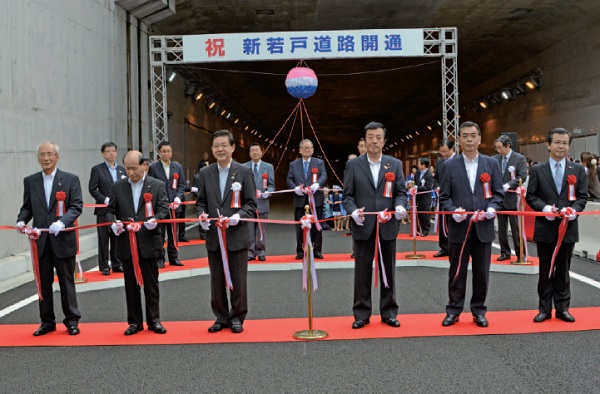 |
| ・Kitakyushu Port and Airport Office ・Kyushu Regional Development Bureau ・Ministry of Land, Infrastructure, Transport and Tourism |
| The Wakato-tunnel, the main construction of the Shin-wakato-road is the last one, was constructed or planned at the present day in Japan. Various challenges in the construction have been overcome, with calling upon a great amount of engineering technique compiled in the history or building up new development as follows; i) Development of the cost-efficient submerged caissons, while choosing the durable full-sandwich type of steel-concrete-steel as main structure. ii) Construction management to submerge and set out caissons on the planned tight curve. iii) Coexistence with neighboring precision machine factories during the construction iv) Recycle of mass of industrial waste in the past, appeared in the site v) Care for many ships passing the site in the narrow channel at any time of night or day, etc. Thus in 2012, the Wakato-tunnel was inaugurated, with celebrating the City of Kitakyushu’s 50th birthday. |
| 3. “Trapezoid-shaped CSG Dam”, a new dam construction technology originated in Hokkaido and is spreading to the World-Tobetsu Dam Construction Project- |
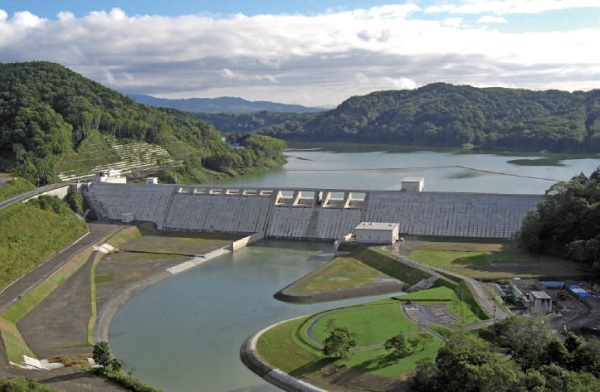 |
| ・Hokkaido Government and ・a Special Construction Joint Venture of Kajima Corporation, Takenaka Civil Engineering & Construction Co., Ltd. and Iwakura Construction Co., Ltd. |
| Tobetsu Dam is a multi-purpose dam which adopted the trapezoidal CSG dam for the first time in the world as dam body. At first, this new technology of dam construction has various technical challenges which were overcome by conducting a variety of research and testing. As a result, we have established how to set the strength of CSG, test methods, construction specifications, and quality control methods. Then, by taking advantage of the features of the trapezoidal CSG dam, the effective use of riverbed gravel as material for the dam body, we arrived to lower the environmental impact as well as to reduce a significant construction cost, and by utilizing ICT to promote the rationalization of construction and to advance the quality control, we arrived to shorten the construction period. |
| 4. High speed excavating of SENS, on the boundary area between mountain and shield tunneling method-Tsugaruyomogita Tunnel on the Hokkaido Shinkansen Line- |
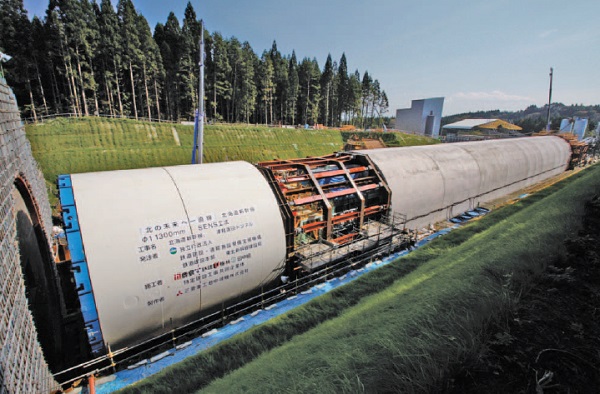 |
| ・Aomori Shinkansen Construction Bureau, Railway Construction Headquarters, Japan Railway Construction, Transport and Technology Agency ・Kajima, Tekken, Umebayashi, Tanakagumi Joint Venture |
| The geology of the Tsugaruyomogita Tunnel on the Hokkaido Shinkansen Line is mainly consisted of unconsolidated sand stratum with maximum water head of 40 m. For ensuring improved safety in the Tsugaruyomogita Tunnel construction, instead of studying auxiliary methods of NATM, different excavation methods were reviewed and, as a result, SENS was selected. In the Tsugaruyomogita Tunnel project, by means of the techniques used to increase the speed of work progress in the SENS application, it was possible to achieve a maximum monthly advance of 367.5m and an average monthly advance of 190 m. |
[Group-2]
| 1. Overpass Works in the vicinity of Keikyu Kamata Station as part of Continuous Grade Separation Project,Keikyu Corporation |
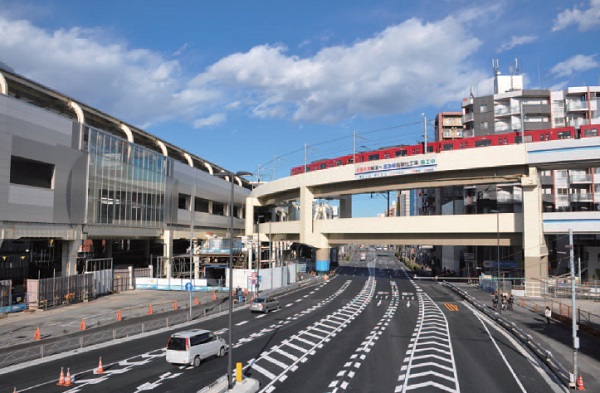 |
| ・The Tokyo Metropolitan Government ・Keikyu Corp. ・Fukken Engineering Co.,Ltd. ・PACIFIC CONSULTANTS CO.,LTD. ・Tokyu Architects & Engineers INC ・KEIKYU, DAIHO, Nishimatsu, TEKKEN JV ・TOKYU, OKUMURA, Morimoto JV ・TAISEI, KEIKYU JV ・KAJIMA, ZENITAKA JV ・OBAYASHI,GOYO JV ・SHIMIZU, TOA, Maeda, RINKAI NISSAN JV ・Kumagai Gumi, SEIBU, HAZAMA ANDO, Fudotetra JV ・TODA, MABUCHI, SMCC JV ・KEIKYU CONSTRUCTION ・KEIKYU ELECTRIC ENGINEERING Co.,Ltd ・TOKYU TECHNO SYSTEM CO., LTD |
|
We elevated the 6km railway extension in the Keikyu Kamata Station area, alleviated traffic by removing crossings, like Route 15 and Route Kanjo 8, raised the station to 2 stories, and increased direct-access trains to improve accessibility to Haneda Airport. |
| 2. Obara Dam Project ~ Mitigation of Environmental Impacts and Promotion of Regional Harmony~ |
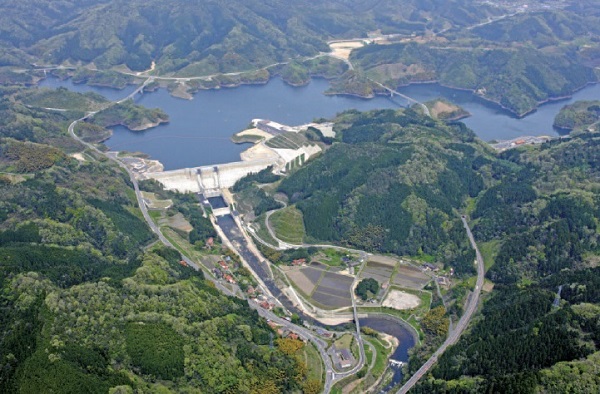 |
| ・Chugoku Regional Development Bureau ・Ministry of Land, Infrastructure, Transport and Tourism |
| Obara dam is a concrete gravity dam constructed in the upper stream of the Hii-kawa river, a class-A river in the eastern part of Shimane prefecture for the purpose of flood control, water utilization and environmental preservation. Both in design and construction phases of the project, measures have been implemented to minimize environmental impacts. To reduce the noise and vibration during discharge, underwater discharge method was introduced, which is the first attempt for the flood control discharge facility in Japan. Trees were planted in the slopes of newly-developed roads to restore potential natural vegetation. Through various measures implemented in cooperation with local governments including the construction of a regatta course and a cycling course, the dam contributes to the revitalization of the reservoir area and the harmonization of upstream and downstream regions. |
| 3. Opening of the Shin (New) Tomei Expressway 162 km opening between Gotenba Junction and Mikkabi Junction -The longest opening in Japan’s expressway history- |
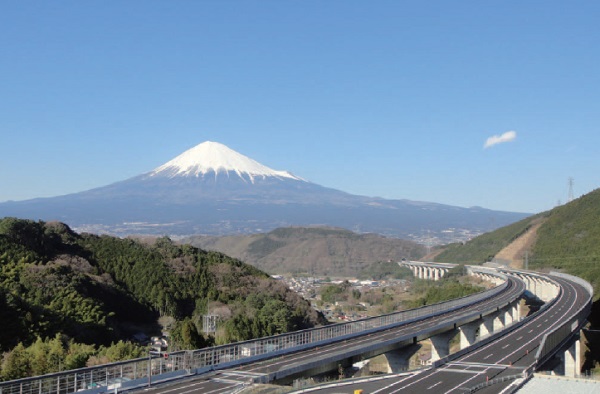 |
| ・Central Nippon Expressway Co.,Ltd. |
| The 162-kilometer section of the Shin (New) Tomei Expressway between Gotenba Junction and Mikkabi Junction has been opened on April 14, 2012. By serving as complementary network, the Shin-Tomei and current Tomei Expressways will make travelling and commuting safer, more predictable, and more reliable. The Shin-Tomei project has been launched in order to develop world’s most evolved road system with high quality in low cost. The state-of-the-art technologies introduced in this project have been contributed the development of civil engineering technologies. The Shin-Tomei will be a new major artery connecting Japan’s largest metropolitan areas, and it is expected to better support industrial, cultural, and socioeconomic activities. |
| 4. Restoration of North Breakwater in the Hachinohe Port (the Great East Japan Earthquake) |
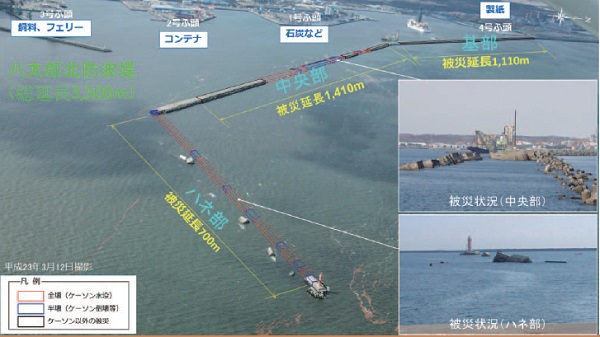 |
| ・Hachinohe Port and Airport Office ・Tohoku Regional Development Bureau, Ministry of Land, Infrastructure, Transport and Tourism |
|
About 90 % of North Breakwater in the Hachinohe port was devastated by the tsunami attacks. After that, the stevedoring work got damaged by high waves directly invaded from the Pacific Ocean. Thus the project of the breakwater restoration became an urgent matter in order to recover the local industry and economy. |
| 5. Yunishigawa dam construction Advanced method for dam construction considering to local communities and environment |
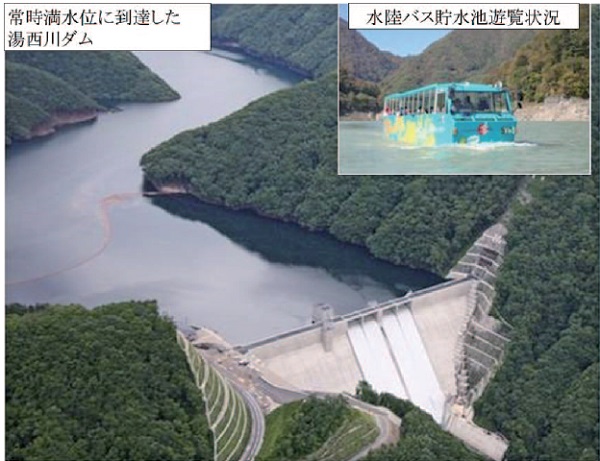 |
| ・Ministry of Land Infrastructure and Transport,Kanto Regional Bureau, Kinugawa Integrated Dam Control Office |
| The construction project of Yunishigawa dam promoted public understanding by overcoming the economic and environmental problems attendant on large dam construction. The cruising RCD construction method was adopted to cast 1.06 million m3 concrete of dam body in 19.5 months. That is the fastest record in Japan, and it enabled to achieve more economical and rational construction. Moreover, the rocks and sand excavated from the dam foundation were effectively utilized for the ingredients of dam concrete ,so that the environmental impacts were minimized. Additionally, the benefit of the dam is being shared to local communities by utilizing the dam reservoir for recreational activities. |
| 6. Restoration Work of Expressways Damaged due to the Great East Japan Earthquake |
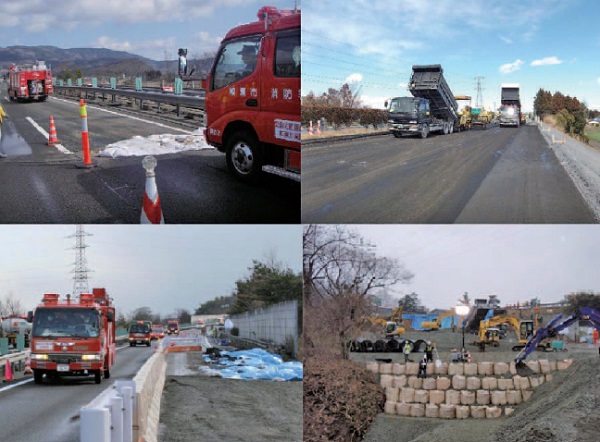 |
| ・East Nippon Expressway Co.,Ltd.(NEXCO-EAST) |
| The Great East Japan Earthquake inflicted great damage on expressways in a wide area ranging from Kanto region to Tohoku region. The damaged expressways, however, were restored at an early stage as a result of three-stage restoration work, in emergency restoration work, in temporary restoration work, and in full restoration work completed with seismic reinforcement. Quick identification of damage, accurate restoration judgment, and short-term intensive management of restoration work allowed us to quickly restore major longitudinal expressways to ensure linkage to government-controlled national highways and prefectural roads that lead to the afflicted areas. Our restoration made great contributions to support of restoration of the afflicted areas. |
| 7. Preservation and Restoration of Tokyo Station Marunouchi Building |
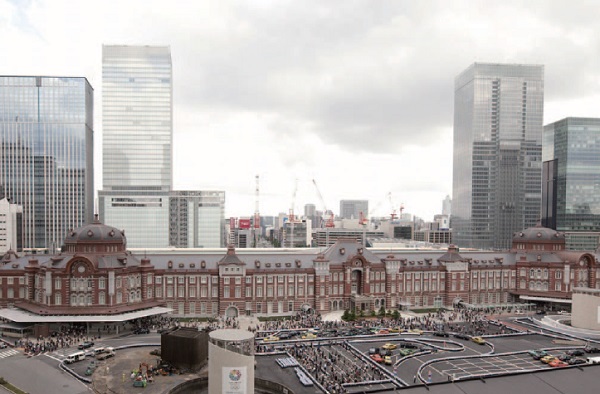 |
| ・East Japan Railway Company |
| This construction has been made possible by the TDR method (Transferable Development Rights for the specified area) which is a method that we worked with the government to develop, in line with the rising sentiment toward revitalization of the Capital, Tokyo. This has also been made possible based on the concept of “newly remodeling the city” together with neighborhoods, and by utilizing the unused floor areas of the Marunouchi Station Building, in terms of floor space ratio, to the nearby buildings. During the construction, several technical measures were taken to continue to operate the everyday railway system and to minimize the effect on station functions. Also, the Marunouchi Building, which stretches over 335m, was seismically isolated. So this project can become a model case for other city remodeling projects in the future, and therefore we are convinced that it has a really high social value. |

